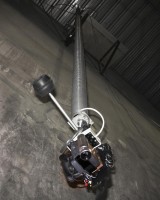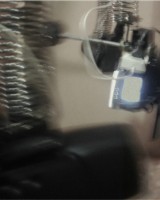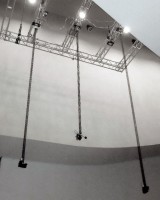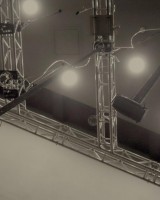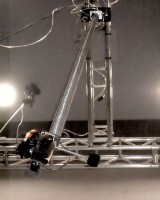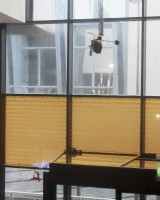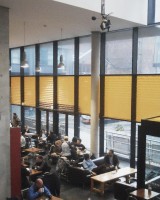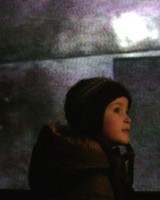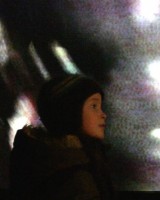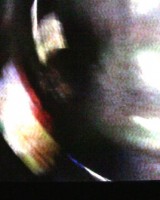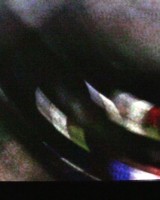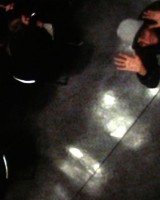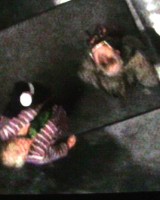Wilberforces was premiered at Winter Sparks, FACT, Liverpool
from Dec 13, 2012 until February 24, 2013
Participants:
Edwin van der Heide Evolving Spark Network
Alexandre Burton Impacts
Bosch & Simons Wilberforces
Daksha Patel Diffusion
Wilberforces is a new work within our long series of vibratory projects. The title refers directly to a phenomenon from science, the Wilberforce Pendulum. This pendulum is nothing more than a hung metal spring with below it a central weight plus eccentric weights for calibration. The secret of the system lies in conceiving a calibration in such a way that the resonant frequencies of vertical movement and rotation of a spring are so near to each other that once set in motion its movement can change gradually from vertical motion into rotation and vice-versa without adding energy from an external source. It is an example of a coupled mechanical oscillator, often used as a demonstration in physics education.
In Wilberforces three long springs are used for generating video and audio data. The springs have a length of around six meters, a size normally not found in physics laboratories and resulting in spectacular large and slow movements. Each spring is hung from above and attached to a pneumatic actuator that sporadically adds energy to the system. Below one of the springs hangs a video camera and microphone, below the other two hang tiny loudspeakers. Signals from the moving camera, mike and speakers provide the basic material for the sound and images produced by the work, obviously influenced by everything occurring in and around the FACT Atrium. The irregular motion of the springs can be tracked and experienced through a real time projection of further processed sound and image within a purpose-built dark space at the rear of the building.
Read more at http://www.fact.co.uk/projects/winter-sparks/bosch-simons-wilberforces/
and in the article for “espacios sonoros”, UAM, Madrid, 2015
This first version of Wilberforces has been produced by FACT (Foundation for Art and Creative Technology). The preliminary research for the project was made possible with a grant of Fundación Arte y Derecho/VEGAP, Madrid.
Acknowledgements: Günter Geiger (software development) and Peter Van der Hoogt (scientific research)




